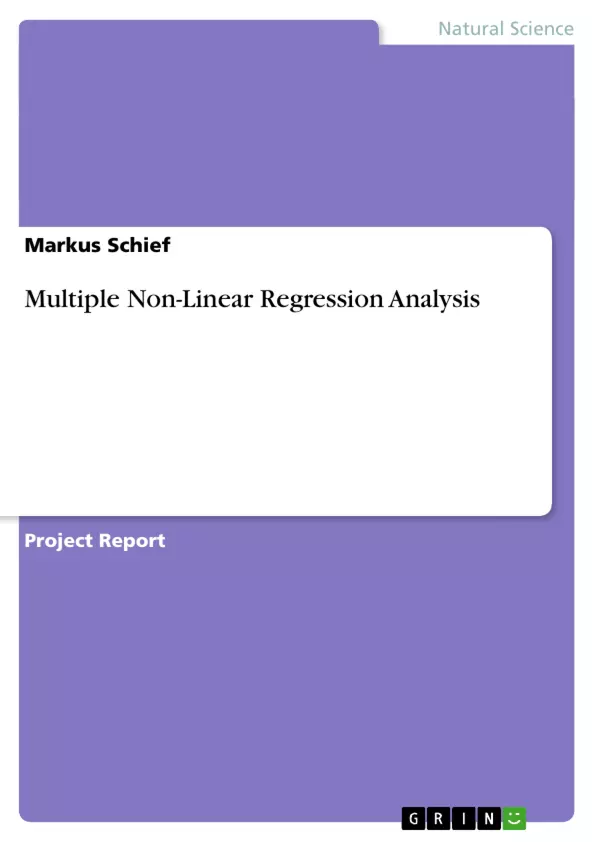Statistical analyses are very important today. In many areas like science or economics, for example, statistical analyses are used to support assumptions and to predict future data. With regards to business administration, modern business statistics can be used to influence decision making in finance, marketing or production, for instance.
The scope of the current project is to analyze a data set “Ibell” of phone calls and to predict future quantity of phone calls based on a regression analysis. The “Ibell” data set is related to the U.S. based company International Bell Communications (Ibell) that owns and operates direct routes through-out the world (International Bell Communications, 2008). Four variables are provided in the “Ibell” data set; three independent variables and one dependent (also called response) variable. The independent respectively predictor variables are “Quarter”, “Price” (price charged for long-distance calls in US$), and “Perinc” (reflecting the local average personal income in US$). The dependent variable is “Quantity” – the number of long-distance phone calls. The present data set was provided by the professor of the QMB class. Thus, the data has not been personally collected and hence the author of this report can not personally guarantee for the quality of the data set. However, the predictor variables of “Quarter”, “Price”, and “Perinc” seem fairly reasonable influences on the number of long-distance calls, in general.
There are three major parts in this report. First, a general description of the data set will be presented, including the sort of variables, the characteristics of the observations, and the peculiarities in the distribution. Second, regression analyses estimate the validity of a modeled relationship between the dependent and the independent variables. Finally, the researcher will predict future quantity of long-distance calls for the upcoming four quarters in order to support International Bell Communications in network capacity planning as well as in revenue forecasts, for instance.
Inhaltsverzeichnis (Table of Contents)
- Introduction and Purpose of this Project
- Project Related Basics in Statistics
- Description of Selected Data Set
- General Description
- Boxplot
- Histogram
- Scatter Diagrams
- Seasonal Index
- Multicollinearity
- Regression Analyses
- Simple Linear Regression Analysis
- Multiple Regression Analysis - Linear Model
- Analysis of Residuals
- Multiple Regression Analysis - Natural Log Transformation
- Prediction
Zielsetzung und Themenschwerpunkte (Objectives and Key Themes)
The purpose of this project is to analyze a data set named "Ibell" related to phone calls, aiming to predict the future quantity of phone calls using regression analysis. This analysis will focus on data related to International Bell Communications (Ibell), a U.S. based company that owns and operates long-distance routes worldwide. The project will use a data set containing information on phone calls and utilize a regression analysis to predict future call volume.
- Statistical analysis of the "Ibell" data set
- Regression analysis to model the relationship between independent and dependent variables
- Prediction of future phone call quantity
- Application of statistical methods to business decision-making
- Analysis of relevant statistical concepts and their application in the project
Zusammenfassung der Kapitel (Chapter Summaries)
The project begins with an introduction that defines the purpose and scope of the analysis. It provides an overview of the "Ibell" data set, including its variables, characteristics, and distribution. The project then explores relevant statistical basics, emphasizing sampling errors, statistical inference, and hypothesis testing. The third chapter focuses on the description of the selected data set, covering its general description, boxplot, histogram, scatter diagrams, seasonal index, and multicollinearity. The project then delves into regression analyses, starting with simple linear regression, followed by multiple regression analysis using both linear and natural log transformations, and an analysis of residuals. Finally, the project focuses on the prediction of future call quantity, providing a comprehensive overview of the methodology and findings.
Schlüsselwörter (Keywords)
The project focuses on statistical analysis, regression analysis, data set analysis, statistical inference, hypothesis testing, phone call prediction, and business decision-making. The key concepts explored include sampling errors, multicollinearity, and regression models. The project utilizes the "Ibell" data set and focuses on predicting future phone call quantity.
- Arbeit zitieren
- Markus Schief (Autor:in), 2008, Multiple Non-Linear Regression Analysis, München, GRIN Verlag, https://www.grin.com/document/93742



